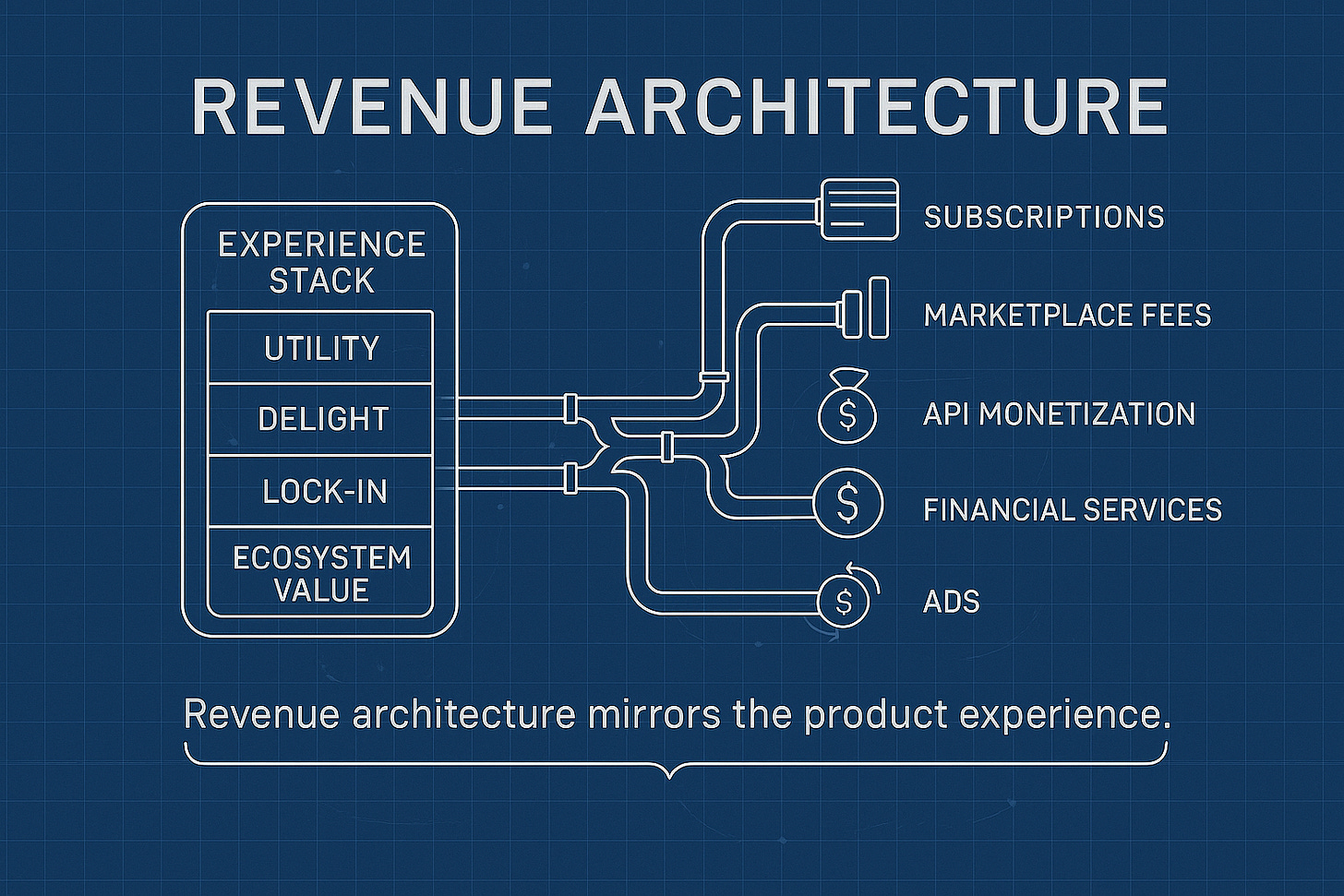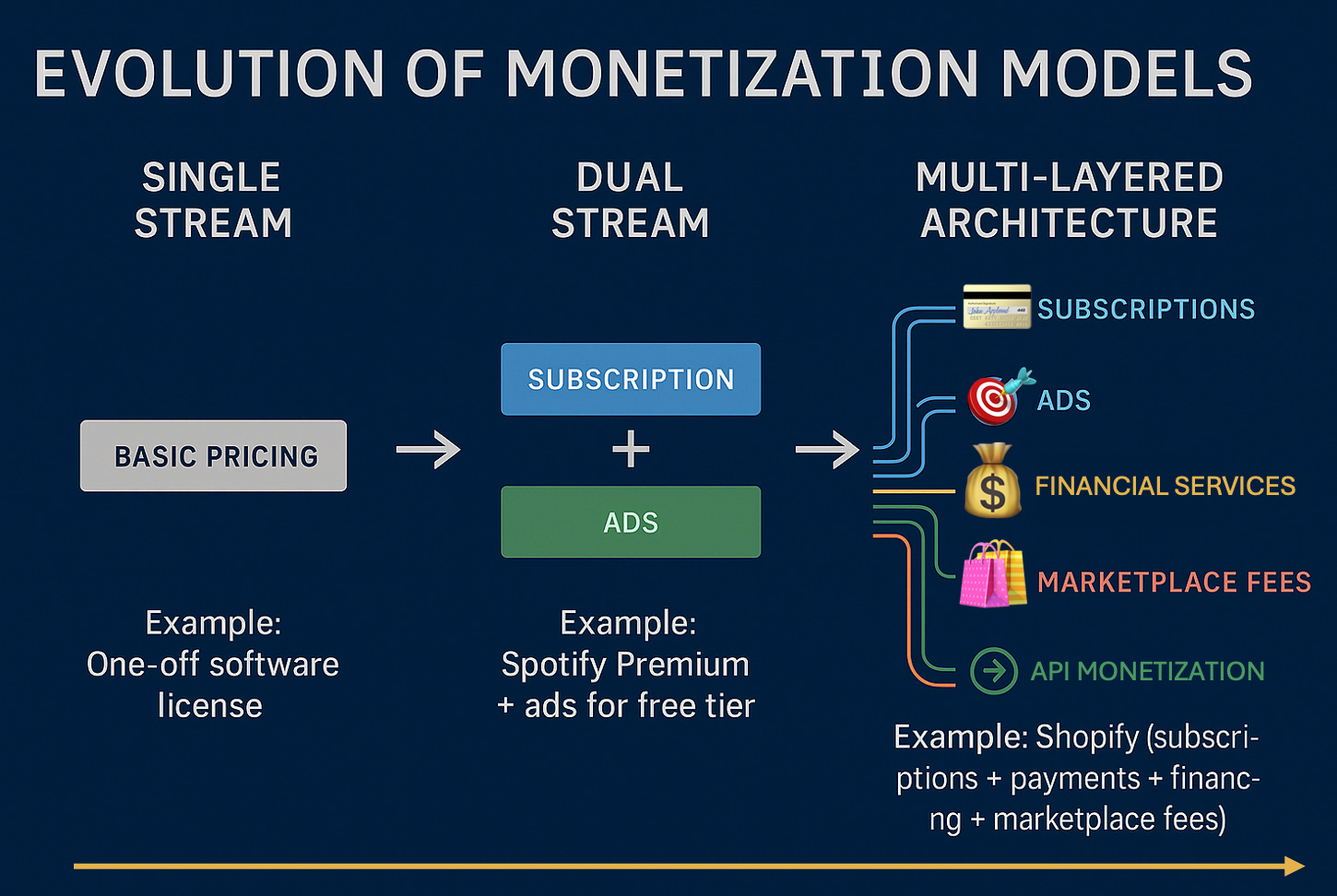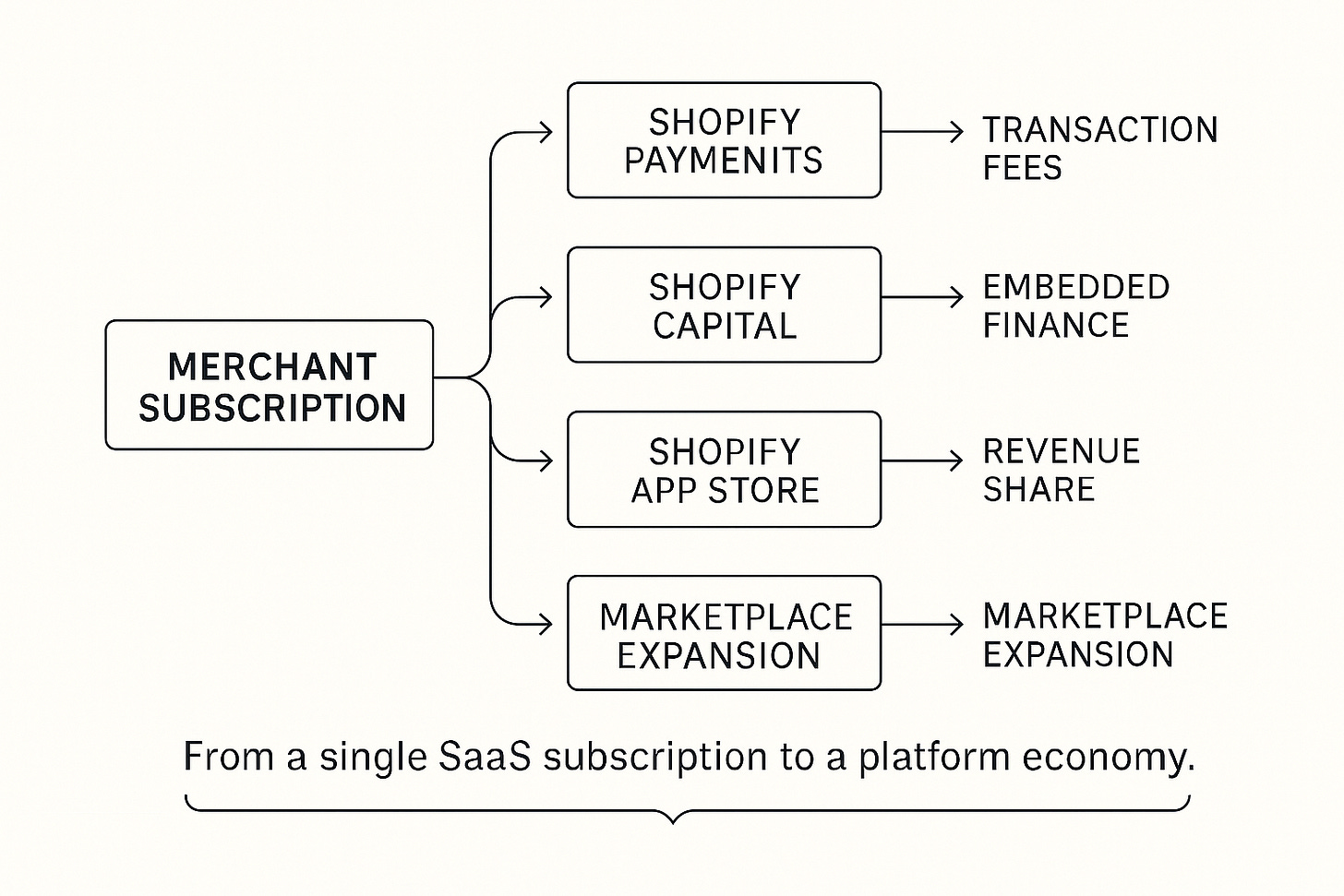Revenue Architecture: How the Top Digital Businesses of 2025 Capture Value and Scale Growth
#110: Chapter 4: Value Capture and Monetization Design / 4.1 Revenue Architecture, Not Just Pricing Models
In Chapter 3, we explored how to create value: first through the Experience Stack (Utility, Delight, Lock-In, Ecosystem Value), then through Value Multipliers like data exhaust, feedback loops, and automation.
But a hard truth lurks beneath even the most brilliant product design: value creation alone is not enough.
To build a sustainable digital business, you must also capture that value — turning engagement, data, and network effects into actual revenue streams. This is where many companies stumble. They think of monetization as a late-stage bolt-on, typically in the form of a single pricing model: subscriptions, ads, or transaction fees.
But the most successful firms of 2025 don’t rely on one stream.
Instead, they design Revenue Architectures: multi-layered systems that map directly to the modularity of their business models. These architectures are not just about how much you charge, but how value flows through the entire ecosystem.
TL;DR: Revenue Architecture, Not Just Pricing Models
Value creation alone doesn’t sustain a business — companies must capture value through multi-layered monetization systems.
Traditional pricing models are too narrow. Instead, design a Revenue Architecture that mirrors your product’s Experience Stack.
Four core revenue streams drive resilience: Subscription, Transactional, Attention-Based, and Embedded Finance/Affiliation.
Combining these streams creates revenue flywheels, as shown by Shopify and Duolingo case studies.
Key metrics like Revenue Concentration Risk and Attach Rate reveal system health and scalability.
AI-driven ecosystems of 2025 demand monetization strategies that are modular, ethical, and aligned with both users and partners.
Table of Contents
Introduction: From Value Creation to Value Capture
The Limits of Traditional Pricing Models
What is Revenue Architecture?
The Four Core Revenue Streams
Subscription
Transactional
Attention-Based
Embedded Finance & Affiliation
Case Study: Shopify’s Layered Revenue Architecture
Aligning Monetization with the Experience Stack
Essential Metrics for Multi-Stream Monetization
Best Practices for Designing Revenue Architectures
Case Study: Duolingo’s Multi-Stream Evolution
Strategic Implications for 2025 and Beyond
Closing Thought: Building Resilient Monetization Systems
References
The Limits of Traditional Pricing Models in Digital Business
Traditional strategy teams start with a pricing question:
“Should we charge per seat, per month, or per transaction?”
While important, this is like asking about roof shingles before you’ve designed the house.
Pricing is the surface layer. Underneath, there are structural choices that determine which pricing models even make sense.
Example:
Netflix circa 2010 could only succeed with a subscription model because its content costs were fixed and usage was unlimited.
Airbnb thrives on transaction fees because supply is variable and demand is episodic.
Shopify layers subscriptions and transaction fees, because it monetizes both merchants and the flow of commerce through its platform.
A pricing model is a tactical decision.
A Revenue Architecture is a strategic design.
What is Revenue Architecture? Key Components Explained
A revenue architecture maps four key elements:
Value Flows — Where is value being created and exchanged across the ecosystem? (e.g., merchants, buyers, partners, advertisers)
Capture Points — Where can you introduce monetization without breaking the experience? (e.g., checkout, API calls, premium features)
Monetization Mechanisms — The actual tools: subscriptions, usage-based pricing, ads, financial services, affiliate fees.
Layer Interactions — How different streams reinforce each other rather than compete for the same dollar.
Think of it as a financial twin of your Experience Stack.
Each layer of Utility, Delight, Lock-In, and Ecosystem Value should have a corresponding way to capture value — without undermining user trust or growth dynamics.
The Four Core Revenue Streams Every Digital Business Needs
Most digital businesses in 2025 combine several of these core archetypes:
1. Subscription (SaaS, Membership, Retainers)
Recurring fees for access to software, services, or content.
Strengths: Predictable revenue, strong LTV/CAC ratios, aligns with Lock-In.
Risks: Churn sensitivity, customer fatigue, high initial acquisition costs.
Examples: Figma, Notion, Duolingo Plus.
2. Transactional (Marketplaces, Payments, Usage-Based APIs)
Monetization triggered by a discrete action or sale.
Strengths: Scales naturally with ecosystem growth, lower friction for entry.
Risks: Revenue tied to external volume; vulnerable to seasonality.
Examples: Airbnb, Shopify, Stripe.
3. Attention-Based (Advertising, Sponsorships, Data Licensing)
Revenue tied to user attention and data signals.
Strengths: Unlocks free-tier growth, monetizes casual users.
Risks: Can erode Delight if intrusive, privacy regulation risk.
Examples: TikTok, YouTube, Spotify free tier.
4. Embedded Finance & Affiliation
Capturing value by sitting inside the financial flows of others.
Strengths: Extremely high margins, creates deep Lock-In for business customers.
Risks: Regulatory complexity, operational liability.
Examples: Shopify Capital, Uber debit cards, affiliate referral programs.
Case Study: Shopify’s Layered Revenue Architecture
The true magic happens when you combine streams so that they amplify each other rather than cannibalize.
Consider Shopify:
Subscription fees create a predictable base of merchants.
Transaction fees grow as those merchants succeed, aligning incentives.
Financial services (Shopify Capital, payments) deepen Lock-In by embedding Shopify into merchants’ cash flows.
App marketplace revenue extends the ecosystem, incentivizing partners to build.
This is a revenue flywheel: each stream accelerates the others.
By contrast, a company relying on a single stream has no such resilience.
Keep reading with a 7-day free trial
Subscribe to The Strategy Stack to keep reading this post and get 7 days of free access to the full post archives.





